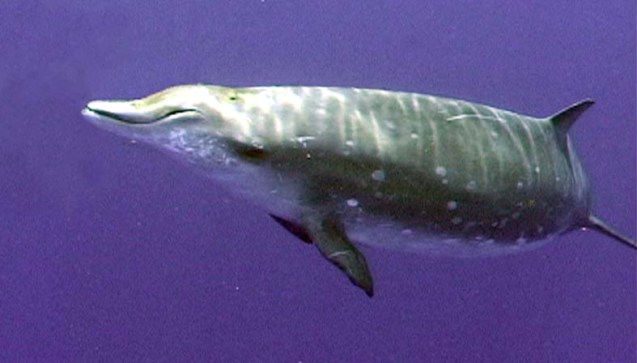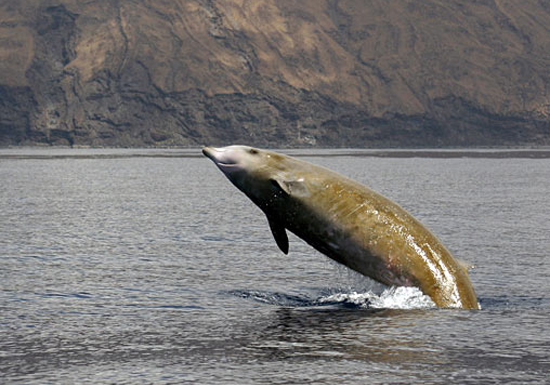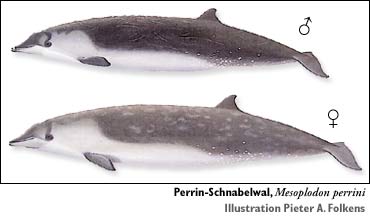
August 18, 2011

A month ago, Australian officials found a beached whale. They thought it was a minke, but recently announced it was a Cuvier’s beaked whale (Ziphius cavirostris) – one of only four discovered in the past 150 years by the Queensland Museum. Cuvier’s beaked whales are one of 21 known beaked whale species. It is clear that this is only the tip of the iceberg.
Georges Cuvier first described this species in 1823 from part of a skull found in France in 1804. He thought it represented an extinct species — it wasn’t until the 1870s that it was realized the type specimen represented a living species.
Beaked whales, by far, are the most frequent new marine mammal to be discovered. How many are out there?

Scientific Name:
Common Name/s:
| English | – | Perrin’s Beaked Whale |
| French | – | Mésoplodon De Perrin |
| Spanish | – | Zifio De Perrin |

Perrin’s beaked whale (Mesoplodon perrini)
For more on the new cetaceans discovered since 2000, see here.
About Loren Coleman
Loren Coleman is one of the world’s leading cryptozoologists, some say “the” leading living cryptozoologist. Certainly, he is acknowledged as the current living American researcher and writer who has most popularized cryptozoology in the late 20th and early 21st centuries.
Starting his fieldwork and investigations in 1960, after traveling and trekking extensively in pursuit of cryptozoological mysteries, Coleman began writing to share his experiences in 1969. An honorary member of Ivan T. Sanderson’s Society for the Investigation of the Unexplained in the 1970s, Coleman has been bestowed with similar honorary memberships of the North Idaho College Cryptozoology Club in 1983, and in subsequent years, that of the British Columbia Scientific Cryptozoology Club, CryptoSafari International, and other international organizations. He was also a Life Member and Benefactor of the International Society of Cryptozoology (now-defunct).
Loren Coleman’s daily blog, as a member of the Cryptomundo Team, served as an ongoing avenue of communication for the ever-growing body of cryptozoo news from 2005 through 2013. He returned as an infrequent contributor beginning Halloween week of 2015.
Coleman is the founder in 2003, and current director of the International Cryptozoology Museum in Portland, Maine.
Filed under Cryptomundo Exclusive, CryptoZoo News, Cryptozoologists, Cryptozoology, New Species